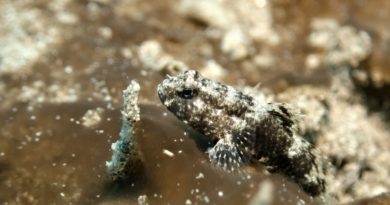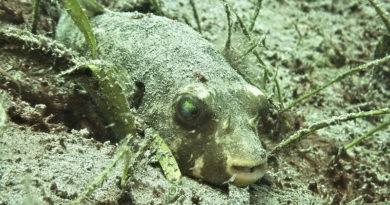High Dolphins?
Could Dolphins Get High from Pufferfish?
Lately, the international science news featured a story about dolphins catching and squeezing a pufferfish, supposedly to get high. The story came with some really nice footage of the behavior, which you can see here:
Edit 2021: The video was taken off YouTube, the behavior is also described here. “Nicholson told IFLScience the behavior has been widely recorded all around Australia from multiple species of dolphins. However, she said no peer-reviewed research has been published on it.”. Edit number 2: This is the same video, from a different YouTube channel.
The dolphins are clearly playing with the puffer, but are they actually getting high? Let’s think about the neurobiology of the situation for a minute:
What does it mean to get “high”?
Our brains have a number of systems which regulate our moods. This is useful for the survival of an animal: sometimes it makes sense to rest and preserve energy. A relaxed mood is appropriate. At other times, a high level of activity is needed, for fighting, fleeing, mating or simply taking a huge shit. The neuromodulatory systems in our brains regulate these activity levels and moods. In each of these systems, one brain area makes a chemical, called a neuromodulator, and then sends it to a number of other brain areas, where it regulates how active that region is. The systems using the neuromodulators serotonin, dopamine, acetylcholine, endorphin and cannabinoid systems are prominent neuromodulatory systems. These brain chemicals are also involved in pain and it’s absence, hunger, sexual arousal and learning ability. This is a very compressed summary of the workings of a number of highly complex systems, but it’s enough for our purpose of explaining what “high” means in terms of neurobiology: Someone is high when his neuromodulatory systems are activated by an external chemical, something he either smoked, ate or injected. These “drugs” mimic the neuromodulators, and make the person feel good in a way normally brought about by the neuromodulator. Cocaine mimics dopamine, and conveys a fake sense of reward to the user. Morphine mimics the endorphins and conveys a fake sense of total painlessness. That is pretty much how getting high from every drug works.
Is that similar for dolphins and humans?
Humans and dolphins are both mammals. While brains have evolved considerable since the two lineages, primates and cetaceans, split about 80 million years ago, the basic neuromodulatory systems have remained relatively constant. Different parts of the brain have changed much more since these ancient times. Drugs, I would suspect, affect humans and dolphins relatively similarly. This is a matter of degree, and naturally I can’t know for sure:
I only know how certain drugs feel for me, and I know how they act in the human brain. I don’t even know how the very same drug, let’s say marijuana, feels for my best friend. But, I can ask him, and observe him when he is stoned, and I know that our brains, both human brains, have a very similar setup in terms of brain anatomy and chemistry. So, I can deduce that it probably feels pretty similar for him as well. A dolphin I can’t ask, and I have never gotten high with one. But, I know some things about its brain anatomy and chemistry, which has strong similarities to a human brain. Hence, my educated guess is that similar drugs have similar subjective effects for a dolphin.
So, what does the pufferfish’s toxin do?
The toxin of the puffer fish is called tetrodotoxin. It’s a sodium channel blocker. Sodium channels are not a specific part of any neuromodulatory system, but a crucial element of almost all nerve cells. The fast transduction of nerve signals, whether pain, motor commands, or touch sensation, depends on sodium channels. No mimicking of neuromodulatory signals is going on here.
A sodium channel blocker many of us have experience with is the lidocaine which dentists use to numb the gums before starting a treatment. It simply blocks the nerve transmission sending pain signals from the tooth to the brain. This is not an exciting sensation, it’s not mood altering, and nobody would call a numb mouth a “high”. This is what the puffer’s toxin does as well. It’s unlikely to get the dolphins high. A tingeing sensation is more likely, and this is also what the traces of tetrodotoxin which are left on puffer fish meals in the Japanese cosine are supposed to evoke. If you have a Japanese fugu (pufferfish) chef who had too much sake before coming to work, you might get paralyzed by too much of the toxin. But no one has reported an euphoric high from the toxin, as far as I know.
In the footage above, the dolphins are clearly having fun with the puffer fish. But I would not go so far and interpret their swimming behaviors as an indication of being high. It’s an easy trap to fall into to anthropomorphize and assign animal behaviors meanings they don’t have. Erring on the side of caution, my guess would be that the dolphins in the video are not high.
So:
Again, I can’t get into the head of those dolphins, but I think it is rather unlikely that the pufferfish’s tetrodotoxin would get them high. It probably numbs them a bit, which is not an exciting or pleasant sensation.
Don’t get me wrong – I don’t think that the idea that large-brained mammals like dolphins have a rich enough inner life to appreciate inebriation is wrong at all. I am sure they would like getting high just as many humans do. But sucking the pufferfish, in my opinion, is probably not the way they do it.


